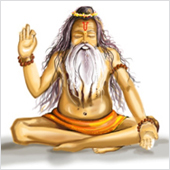Tree in Digital Painting:
1. Introduction:
Digitization has not left an art like painting untouched. The traditional painting practices have adapted and evolved the digital format. Hardware and Software technologies have enabled the imitation of the traditional practices in painting in digital medium as well. This module deals with various aspects of digital painting. An illustration by painting a tree in digital medium is done to demonstrate the tools and techniques of this medium. The illustration shows how traditional painting practices are done digitally using computer software and hardware technologies. The module also includes a video where the whole process of illustration is recorded for the viewer.

2. Tools:
Technologies like pen tablets and tablet monitors have so far made digital painting more efficient and popular. Though the technologies are relatively costly, many professionals prefer using these technologies for personal as well as commercial purposes. Image manipulating software like Adobe Photoshop, Corel painter, Sketch book pro, ArtRage, GIMP, and Krita etc. can be used along with compatible computer hardware for creating these digital images. In the illustration Wacom Cintiq (Tablet monitor) is used for digital painting using Adobe Photoshop CS5 (image manipulating software).

• Brushes:
Various types of brushes are available in such a medium and each can be used according to the particular requirements. The size of the brush can be increased or decreased by simply putting a value. Various other textures can be generated with a choice of other brushes. One can customise these brushes by changing the selection of percentage of size, roundness, hardness, spacing. For professional use one can even buy digital brushes in the internet.

Fig. Left: Present brushes (Photoshop CS5) Fig. Right: Customisable brushes (Photoshop CS5)
3. Colours:
In this digital illustration of the tree colours similar to the ones used for creating the tree using water colour are selected. In the digital format, the tone is not created since the software automatically gives the tonal variations of a particular colour when selected. Depending on the light direction, depth and texture of the object, correct colour has to be picked accordingly.

Fig. The tonal variation of red colour.
The digital colours that have been used in the illustration are as follows:

i. Procedure:
A new file is opened in the software, Adobe Photoshop CS5. The file size and resolution has to be adjusted before starting to paint. The size varies depending on the object that is to be drawn. The recommended resolution of the image is 300 pixels and the background colour is kept white.
Step 1: (Contour Drawing)
Light grey colour is selected and with the brush tool, a contour of the tree is drawn in the first layer. As mentioned earlier in the previous modules that this contour drawing technique helps to guide the painter to maintain the shape of the object while painting and gives an idea about the correct proportion of different elements in the object. A light colour is chosen for this purpose and the contour of the tree is drawn accordingly. Digital painting has an edge over the traditional paper painting in this process. After completing the painting the contour layer can be deleted and the outlines vanish completely, therefore contour drawing can also be done with dark colours because one always has the option of deleting the layer, whereas in paper painting the outlines has to be almost invisible.

Digital Painting:
Step 1:
Almost all the techniques used in digital painting are similar to the techniques used in water colour painting. The advantages in digital painting is that, one has the option of undoing brush movements and one can always go back to the history of the present job. In this illustration it is assumed that the direction of the light is from the top and thus the highlighted portion at the top is painted with the light colours i.e. Lemon yellow.

Step 2:
Procedure similar to the one in water colour painting is followed in digital painting as well. The illustrator gradually goes downward and paint leafs of the tree with a lighter tone of the green colour. As it moves further downward the tone becomes darker considering the basic principles of light direction and its relation to the formation of shadow. Note that the colour tone gradually becomes darker as it moves down because the light falling on the descending portion are obstructed by leafs at the top. Leafs at the top receive lighter tone whereas leafs at the lower portion receive darker colour tones.

Step 3:
It is very important to resize the brush while putting strokes of leafs and branches. A smaller size is recommended for such strokes. The depth areas are highlighted by darker colour tones. And shadow of the tree is also created at the same time on the ground with a darker tone. The base of the tree is painted with green colour to create the grasses and with the appropriate brush sizes strokes of grasses are made. The direction and the source of the light always play an important role in deciding the tone of a colour. The shaded areas receive darker tone whereas the highlighted areas receive lighter tone.

Step 4: Furnishing Detail:
In the tree trunk some fine details need to be added to give it dimension in the painting. The texture of the tree trunk is highlighted, leafs are highlighted. During this process one can note that the tree gradually is transformed into more three dimensional and looks a realistic figure through the effect of colours and their various tones. Note that the quality of tones should also reflect the quality of the material – for example the hair, the beads, the cloth, the skin – all have different textural qualities different from one another. A keen sense of observation will help you to note the subtle differences in the treatment of light and dark colours to achieve the right texture.

Check the Video for details of the step by step process of illustration.

